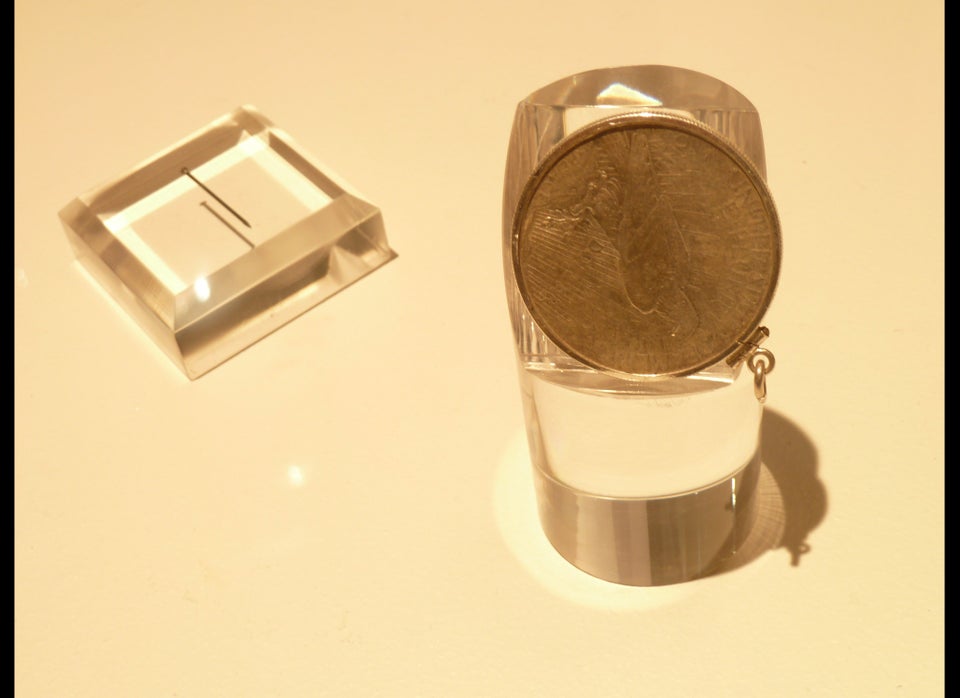
By Patricia Reaney
NEW YORK (Reuters) - The mysterious cloak and dagger world of international espionage and its real-life heros and villains are exposed in a new exhibition, the first to be sanctioned by U.S. intelligence agencies.
"Spy, the Secret World of Espionage," which opens at the Discovery Times Square on Friday, includes hundreds of artifacts, some from the vaults of the CIA and FBI and the National Reconnaissance Office (NRO).
They range from a World War Two-era collapsible motorbike that could be dropped by parachute and deployed in 10 seconds and a German ENIGMA machine to create secret messages to a camel saddle used by one of the first CIA agents in Afghanistan after the 9/11 attacks to bugging devices, microdots and surveillance equipment.
"This is the first and only time these items will ever travel. It is kind of an unparalleled cooperation and collaboration with the CIA and FBI," said H. Keith Melton, an author, intelligence historian and expert on spy technology who contributed items from his own collection.
The interactive exhibit, which will travel to 10 U.S. cities, offers a glimpse into a part of history and a secret world peopled with real-life agents, who Melton says are often completely misdefined by Hollywood and are nothing like James Bond.
"Pop culture is about two things -- assassination and seduction. The real world is about information and communication. The sad thing is information and communication don't sell movies," said Melton.
"James Bond wouldn't last four minutes in the real world."
Melton, the author of several books on espionage including "Ultimate Spy," has spent decades gathering unusual spying gadgets from Germany, Russia, Mexico, Australia, Canada, Great Britain and the Czech Republic that explain what espionage is.
"I have devoted most of my life to tracking down obscure bits of spy gear around the world," he said.
The exhibition, which runs through March 2013, traces the world of international intrigue from the start of World War Two, to the establishment of the first U.S. spying agency, Office of Strategic Services (OSS), after Japanese forces attacked Pearl Harbor in 1941, through the Cuban Missile Crisis, the Cold War, the downing of Pan Am flight 103 in 1988 and the September 11, 2001 attacks.
It also includes the expulsion by the U.S. of 10 Russian spies in 2010, including Anna Chapman, who had been dubbed a modern-day Mata Hari by the popular press.
Although Melton said Chapman was a "darling of the media," he added that she was not a trained intelligence officer. The best spies, he added, are the ones no one knows about.
"They stay beneath the radar," he explained. "We hear of the ones who are caught but the ones we should worry about are the ones we don't hear of."
Oleg Penkovsky, a Soviet military intelligence officer who spied for the U.S. and Britain in the early 1960s is one of the most valuable double agents to work with the U.S. because of the Soviet missile secrets he provided to the United States during the Cuban Missile Crisis in 1962.
A U.S. Navy chief warrant officer named John Walker has the dubious distinction of being the most damaging spy in U.S. history.
He offered to sell secrets to the Soviet intelligence agency, the KGB, in the 1970s. Codenamed "number 1" by the KGB, by the time he was arrested in 1985 he had recruited his best friend, his brother and his son into his spy ring.
The exhibit's debut in New York seems appropriate.
"New York is a hotbed of spies," said Melton. "There are more spies at the U.N. than diplomats.
(Reporting by Patricia Reaney)

